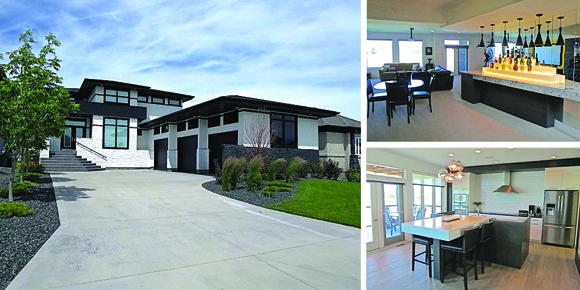According to Royal LePage, extreme variances in recent home price appreciation across Canada have contributed to vast differences in the types of properties a prospective homeowner can expect to buy with a $1-million budget.
Across Canada, Winnipeg was cited in the report as having the biggest bang for $1 million.
“Buyers with million-dollar budgets in Winnipeg are able to live like kings,” said REALTOR® Michael Froese. “Whether it’s an older colonial-type estate or modern mansion, the region’s extreme affordability relative to elsewhere provides purchasers with this budget access to a true luxury home.”
While the once-exclusive $1-million home has become the norm in certain markets, in others, it can purchase anything from an ultra-luxury abode to an entry-level residence.
A $1-million home’s location, size, proximity to amenities and current condition ranked as the top four factors that influenced its pricing, not unlike homes in other price ranges. However, together, these four characteristics varied considerably from region to region, with Canada’s two hottest markets — Toronto and Vancouver — offering smaller, more dated two-storey “starter” homes when compared to larger, luxurious mansions elsewhere.
While the average number of bedrooms and bathrooms typically found in a $1-million home did not differ by region as materially as the aforementioned four factors, there were noticeable differences between certain regions.
In January 2017, a $1-million home in the city of Vancouver had an average of 2.6 bedrooms and 2.1 bathrooms. Looking to Central Canada, $1 million secured an average of 3.4 bedrooms and 2.5 bathrooms in the city of Toronto, while purchasing a $1-million home in Winnipeg delivered the biggest bang for your buck, with an average of 4.1 bedrooms and four bathrooms.
In fact, of the seven cities studied across Canada — including Vancouver, Calgary, Saskatoon, Winnipeg, Toronto, Montreal and Halifax — Winnipeg provided the most living space overall, with $1 million fetching on average, a 3,505-square-foot luxury home in a desirable neighbourhood.
“There are striking differences in the options available for those who are looking to purchase a $1-million, two-storey home in Canada,” said Dianne Usher, senior vice president of Johnston and Daniel, a division of Royal LePage.
“From an older starter home in Vancouver to a waterfront property with all of the bells and whistles in Halifax, the amount of value and space that prospective buyers receive is largely dependent on the characteristics of the market in which they are located.”
When looking at inventory levels and sales activity, $1-million properties and transactions have been more prevalent in highly sought-after markets where greater demand has pushed home values higher. As a result, this has led these regions to experience a weakening in the overall value received for $1 million, when compared to other areas across the nation that are less constrained by supply and demand.
While smaller, regional markets have continued to maintain their value over the last decade, 10 years ago, prospective homeowners in Canada’s largest metropolitan areas were able to purchase fully-renovated homes in desirable neighbourhoods with considerably more space for $1 million.
“What used to be considered a luxury price point is now the status quo in Canada’s two hottest markets,” added Usher. “Once carrying significant purchasing power, $1 million is now either below or on par with the price of an average two-storey home in Toronto and Greater Vancouver.
“Now, instead of a fully-upgraded three-bedroom, three-bathroom, two-storey property in prestigious neighbourhoods like Rosedale or West Vancouver, you’re getting a much smaller two- or three-bedroom, two-bathroom property in need of renovation in a less sought-after location.
The profile of a $1-million buyer was also found to vary by region, with developers and first-time buyers dominating the $1-million, two-storey property segment in Canada’s largest metropolitan areas, while wealthy young to middle-aged professional couples with children acted as the predominant purchasers elsewhere.



